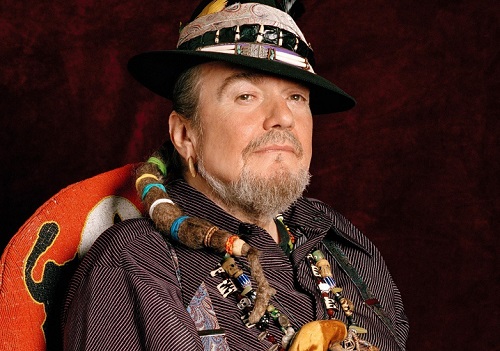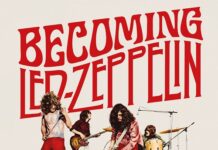By Ira Kantor
Equal parts shaman, maestro and artistic lord of the bayou, music’s unmistakable Night Tripper Dr. John has bid us farewell at the age of 77.
What Dr. John (the former Mac Rebennack) leaves behind is a cornucopia of work that not only elevated the sounds, style and atmosphere of New Orleans to a level all its own (furthering the groundwork laid down by such influences as Huey “Piano” Smith, Fats Domino and Professor Longhair), but demonstrated just how funky this bulky, bearded troubadour really was.
Some have dubbed Dr. John’s distinctive voice as a “growl.” It’s not a growl for a growl is harsh. Rather, he possessed a captivating drawl — one with slink and seduction that could fulfill us as much as a bowl of gumbo.
Like another contemporary who also passed away this month — the wholly underrated Leon Redbone — Dr. John never sounded like the times he lived in. Where Redbone would build his enigmatic aura around late 19th century/early 20th century Tin Pan Alley standards, Dr. John was unabashed in having his music sound like it was coated by the waters of the Louisiana swamps.
First cutting his musical chops as a session player, he burst onto the scene in his own right with his eerily catchy 1968 debut album Gris-Gris. His very first lyric is not an introduction but rather an authoritative stance: “They call me Dr. John, known as the Night Tripper…” The album, as a whole, establishes Dr. John as a force to be reckoned with — one that would never sell millions of records, but could still make an impact both in sound and style. Just take a listen to “Mama Roux” and “I Walk on Guilded Splinters” for proof.
This is Tom Waits without the intentional gruffness; Howlin’ Wolf replete with feathers and spats. It all comes full circle with the track “Ice Age,” off his terrific 2012 album Locked Down.
Babylon (1969) would have Dr. John playing around with psychedelia and seems anomalous to his other albums. Despite its somewhat apocalyptic leanings though, he still makes the end of the world sound like a truly festive experience. It should be listening to in tandem with Aphrodite’s Child’s similar concept work 666. By the time of 1971’s The Sun, Moon & Herbs, Dr. John further carves out his niche in popular music – starting to dabble more in the Nawlins funk that would chart his course for the rest of the 1970s (it’s all there in “Zu Zu Mamou”).
Yet instead of churning out original compositions, the maestro’s next studio effort would pay respect to the sounds and songs that broadened his musical upbringing and education. Dr. John’s Gumbo (1972), a hearty sampling of the best of New Orleans’ musical yore is channeled through Dr. John’s barrelhouse piano and carnival barker-like vocals. This emphasizes an originator guided by the past.
Once you hear the opening track of In The Right Place, you know who Dr. John is. “Right Place, Wrong Time” would skyrocket him into the Top 10 of the Billboard Hot 100, solidifying his musical approach as something that should be dubbed “Big Daddy Bonhomie.” Never has the concept of “brain salad surgery” sounded so sweet. “Such a Night,” meanwhile is a delightful frolic. Just three years later, the seemingly outcast Dr. John would be singing the track right along with The Band for their “Last Waltz.”
Keeping his vernacular twisting and bending intact, 1974’s Desitively Bonnaroo plunges Dr. John into solid funk, courtesy of New Orleans stalwarts Allen Toussaint (as producer) and The Meters (as backing band). The title track has Dr. John acting as tom cat drooling over a pretty lady while the rest of the album depicts him as master of ceremonies (just look at the cover) emceeing with a confidence and presence that makes him a true classic.
Dozens more albums — tributes, standards and everything in-between — would be released over the years as his distinctive voice would find its way onto TV commercials and movie soundtracks. Never forgetting his session roots, he would lend his chops to a young Rickie Lee Jones for her self-titled debut album (helping it go platinum in the process). He would win Grammys, be inducted into the Rock and Roll Hall of Fame in 2011, and grace worldwide stages, all while keeping his flair and showmanship at its most dynamic through pastel suits, panama hats, earrings, a back-length ponytail and virtuosic fingers.
In terms of a musical prescription for listeners, he’s about as good as it gets.




















